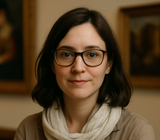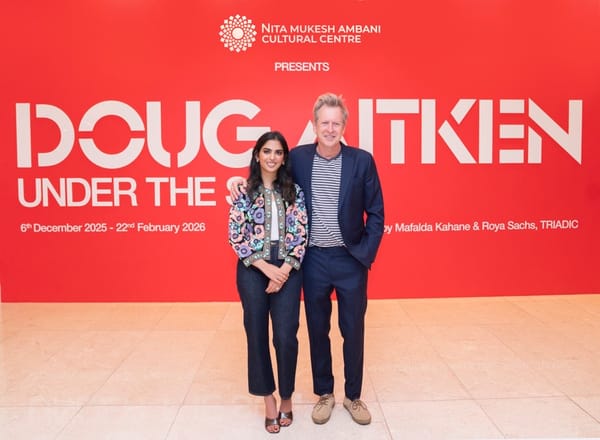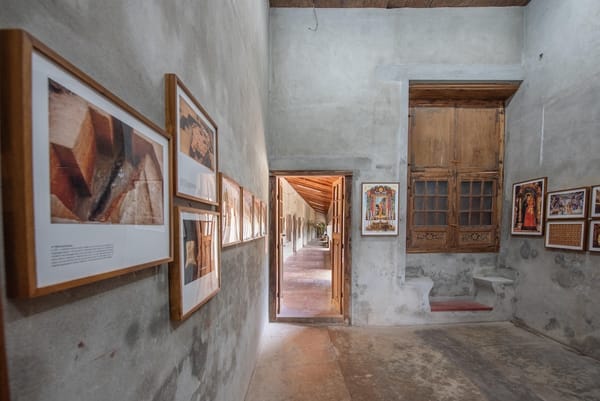The Myth of Originality: Are All Great Works Borrowed?
Originality in art is often celebrated as genius, but history shows it is deeply tied to borrowing, transformation, and influence. From Michelangelo to Warhol, creativity thrives not in isolation but in conversation with the past.

For as long as artists have painted, sculpted, composed or written, the question of originality has loomed large. What does it mean to create something truly “new”? Is originality a spark of genius that erupts fully formed from the mind of the artist, or is it inevitably stitched together from threads of influence, memory, and imitation? The notion of the artist as a solitary innovator has dominated Western art history, yet a closer look reveals that much of what we celebrate as original is, in fact, borrowed, adapted, or transformed.
This tension—between the myth of originality and the reality of influence—has become central to contemporary debates about creativity. From Renaissance masters drawing on classical antiquity to contemporary artists who sample, remix and appropriate, the story of art is one of borrowing. But does that make great works any less great? Or might originality itself be a misunderstood concept, one that requires rethinking in the twenty-first century?
The Renaissance
When Michelangelo painted the Sistine Chapel ceiling, or Raphael his frescoes in the Vatican, neither was striving for originality in the modern sense. Their greatness lay in their ability to reinterpret and surpass the models handed down to them. The Renaissance, after all, was defined by a revival of classical antiquity—artists looking backwards in order to move forwards.
Michelangelo’s muscular figures echo the sculptures of ancient Greece, while Raphael’s harmonious compositions owe much to his study of Leonardo da Vinci. Even Leonardo, often mythologised as an unprecedented genius, worked within a tradition that valued emulation of nature and the masters who came before. To Renaissance eyes, originality was not invention ex nihilo, but the intelligent transformation of inherited forms.
The poet Petrarch, centuries earlier, had already defined the principle: true creativity was the ability to breathe new life into old texts. His humanist successors applied the same idea to painting and sculpture. In other words, borrowing was not only accepted but expected.
Romanticism and the Birth of the Genius
It was not until the eighteenth and nineteenth centuries that originality became the ultimate artistic virtue. Romanticism, with its cult of the inspired genius, shifted the emphasis from tradition to self-expression. Beethoven was revered not because he borrowed from Mozart and Haydn—which he did—but because he seemed to explode their conventions, breaking ground in ways that appeared uniquely his own.
This period entrenched the myth of originality: the idea of the solitary artist possessed by vision, untainted by imitation. Wordsworth wrote of poetry as “the spontaneous overflow of powerful feelings,” and painters such as Caspar David Friedrich turned inward, using landscapes as mirrors of the soul.
Yet even here, closer examination reveals a paradox. Beethoven’s innovations were forged from the very structures he inherited; Wordsworth’s “natural” speech rhythms drew consciously from Milton and Shakespeare. Originality in Romanticism was always relational—it depended on the past even as it claimed to transcend it.
Modernism and the Anxiety of Influence
The twentieth century, with its rapid succession of avant-garde movements, placed originality at the centre of the modernist project. Cubism, Futurism, Surrealism—all proclaimed a radical break with tradition. Picasso’s Les Demoiselles d’Avignon (1907) is often cited as a moment of absolute rupture. And yet the painting itself is a perfect illustration of the myth: Picasso’s fractured figures were inspired by African masks he encountered in Paris, themselves part of long cultural traditions.
The poet T. S. Eliot, in his essay Tradition and the Individual Talent (1919), acknowledged this dynamic explicitly. He argued that great art arises from a “historical sense”—a deep awareness of what has come before. The new work enters into a conversation with tradition, reshaping it rather than annihilating it.
Harold Bloom later named this the “anxiety of influence”: the fear artists feel that their originality is compromised by their precursors. But Bloom also insisted that creative misreading—deliberate distortion of the past—is what gives art its power. The originality of modernism, then, lay not in pure invention, but in audacious reconfiguration.
Postmodernism
If modernism wrestled with the burden of influence, postmodernism embraced it. By the late twentieth century, artists such as Andy Warhol, Sherrie Levine, and Cindy Sherman made borrowing itself the subject of their work. Warhol’s Campbell’s soup cans and Marilyn Monroe prints declared openly that art could be mass-produced and recycled. Levine’s photographs of Walker Evans’ photographs questioned whether originality was even possible. Sherman’s staged self-portraits restaged archetypes from film and media, exposing their constructedness.
Rather than pretending to originality, postmodern artists elevated appropriation into a method. In doing so, they revealed the hidden truth of all art: that it is always already intertextual, always woven from the threads of what has come before. The myth of originality gave way to the play of citation and remix.
Rethinking Originality Today
In today’s cultural landscape, shaped by digital media, the question of originality is both more fraught and more fluid. Sampling in music, memes in internet culture, AI-generated art—all blur the boundaries between authorship, copying, and creation. When a DJ remixes an old track into a new hit, is it theft or innovation? When an AI model generates an image in the style of Van Gogh, is it homage, plagiarism, or something else entirely?
Legal frameworks struggle to keep pace with these developments. Copyright law presumes a clear distinction between original and derivative works, but in practice, the boundary is anything but clear. Artists themselves increasingly acknowledge that originality lies less in the creation of something utterly new than in the unique way influences are combined, transformed, and re-presented.
Philosophers of art suggest that we might need to replace the myth of originality with a more nuanced model: one that recognises creativity as a continuum, not a binary. Borrowing, far from diminishing artistic value, may be the very mechanism through which art evolves.
Borrowing as Brilliance
Consider three striking examples across different media:
- Stravinsky’s Pulcinella (1920): This ballet score, often considered a turning point in Stravinsky’s career, was based on music by the eighteenth-century composer Pergolesi. Stravinsky’s genius lay not in invention but in transformation: he reframed baroque melodies through a modern lens, effectively launching the neoclassical style.
- Marcel Duchamp’s Fountain (1917): A urinal signed “R. Mutt,” borrowed wholesale from industrial production, became one of the most influential artworks of the twentieth century. Its originality consisted in the conceptual act of recontextualisation.
- Jean Rhys’ Wide Sargasso Sea (1966): A prequel to Charlotte Brontë’s Jane Eyre, Rhys’s novel retells the story from the perspective of Bertha Mason, the “madwoman in the attic.” By borrowing a canonical text and reframing it, Rhys produced a work both derivative and radically original.
These cases highlight a recurring truth: originality often arises not from purity but from dialogue, from the friction between the familiar and the new.
Why the Myth Persists
If all art borrows, why does the myth of originality endure? One reason is economic: the art market thrives on the idea of unique, unrepeatable genius. A “Picasso” commands millions because it is seen as the product of singular originality, not collective inheritance. Another reason is psychological: audiences crave the romance of discovery, the thrill of encountering something “never seen before.”
But perhaps the deeper reason lies in how we define identity itself. To imagine originality as possible is to imagine that individuals can stand apart from their influences, that they can be autonomous and self-made. Acknowledging the ubiquity of borrowing unsettles that belief—not only about art, but about human creativity more broadly.
The Freedom of Influence
So, are all great works borrowed? In one sense, yes: every artwork emerges from a matrix of traditions, references, and appropriations. But in another sense, the question misses the point. Originality is not the absence of influence, but the capacity to use influence creatively.
The myth of originality may never disappear—it remains too seductive, too bound up with how we value art and artists. Yet by recognising that all works are, in some sense, borrowed, we gain a richer appreciation of the creative process. The artist is not a solitary genius but a participant in an ongoing conversation across time and culture.





